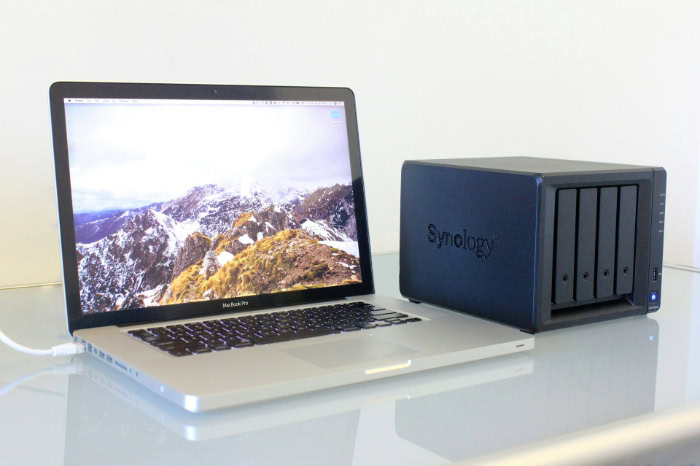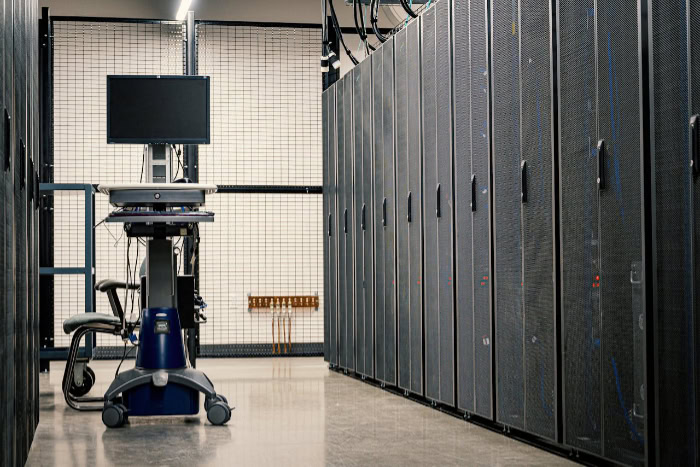Cloud Backup vs. Local Backup: What Works Best and Why

Losing precious files or business data stings far more than most care to admit. That’s why backup strategies are a crucial part of staying prepared, whether you are safeguarding family photos or protecting vital company records.
Cloud backup and local backup both promise peace of mind, but the way each delivers that promise is surprisingly different. Cloud services store your data on remote servers accessible over the internet, while local backups keep copies close by on computers, external drives, or tapes you control.
Understanding the Core Concepts
Backing up data is more than just copying files; it involves making strategic choices about where your valuable information lives, how it is protected, and who ensures everything works when you need it most. Cloud and local backups present fundamentally different approaches to these decisions.
Knowing what sets them apart can help you prepare for anything from accidental deletion to major disasters.
Where the Data Lives
Cloud backup stores copies of your data on servers managed by service providers, typically in distant, professionally maintained data centers. Files are sent to these locations via the internet, and the actual hardware sits far away from your home or office.
This off-site approach means that even if your device is stolen or your building faces a fire, the information remains safe and accessible online.
On the other hand, local backup involves saving your data within your immediate control, such as on external hard drives, network-attached storage (NAS) devices, or even tapes. All hardware stays physically close, often in the same place as the original files.
Recovery is fast and simple when you need to restore something quickly, but your backup might also be vulnerable to the very events that threaten your original data.
How Backups & Restores Happen
Cloud backup relies on transferring data over the internet. Specialized software often automates this process, working quietly in the background to detect new or changed files and uploading them to the cloud provider’s servers.
The provider typically handles upkeep, scheduling, and even organizing versions or retention so you can restore files from a point in time. Restoring data works in the opposite way, downloading needed files back to your device.
Local backups require more hands-on management. Data is either copied directly to a designated external device or through a local network connection.
Scheduling, monitoring, and ensuring backups happen regularly often fall on you or your IT team. Recovery is usually quick because the data moves across your local wires.
Full control makes it possible to customize the process to fit unique needs, but it also means staying disciplined in maintaining regular backups.
Ownership & Responsibility
Choosing between cloud and local backup affects not only where your files live, but also who is responsible for protecting and maintaining them. With cloud backup, responsibility is shared between you and your service provider.
The provider manages the infrastructure, security protocols, and daily operations; you choose what gets backed up, make sure everything is scheduled, and keep track of access.
Local backup places full ownership in your hands. You control every part of the setup, from hardware selection to scheduling and verifying backups and physically securing the devices.
This level of control often appeals to those who want direct oversight but brings the demand of continual maintenance, software updates, and troubleshooting when something goes wrong. Each approach shifts the balance between convenience, control, and personal accountability in data protection.
Benefit Analysis

Choosing a backup strategy is about more than just making copies; it means securing your data in a way that brings lasting value and reliability. Both cloud and local backups offer important strengths across several areas, from how well they handle disasters, to how easy they are to grow, and how much ongoing work they save you.
Resilience & Disaster Recovery
Keeping data safe from disaster is a top priority for any backup plan. Cloud backups excel by automatically placing your files in protected, faraway data centers.
Many providers even store copies in multiple cities or countries, making data loss from local fires, floods, or theft far less likely. If an emergency shuts down your office or home, your files remain secure and ready to restore from anywhere with an internet connection.
Local backup gives you the security of knowing your data never leaves your premises. Recovery can be faster for large files, since the data is nearby and not limited by your internet speed.
However, local backups often share the same physical risks as your original data. A major disaster, like a flood or burglary, could put both your computer and backup device in jeopardy.
Without an off-site copy, some emergencies can mean losing both original and backup together.
Scalability & Flexibility
Data storage needs rarely stay the same for long. Cloud backup services are designed to grow with you.
Adding more space is as easy as clicking a button or allowing your service to expand automatically. Pricing typically reflects only what you actually store, so you avoid the large upfront cost of new hardware and pay only for the capacity you use.
For businesses and individuals who see their data needs grow over time, this flexibility removes the pressure of planning for the future far in advance.
Local backup, on the other hand, depends directly on the physical devices you own. Once your external drive or server is full, you must buy, set up, and sometimes physically install new hardware to keep up.
Budgeting for these upgrades can require careful timing and capital spending. Planning ahead often means buying more storage than you immediately need, which can lead to underused resources sitting idle.
Operational Efficiency
Managing backups takes effort, but not all methods require the same hands-on work. Cloud backup services usually automate every step: scheduled backups happen without extra reminders, software checks for errors behind the scenes, and you are alerted if anything goes wrong.
Updates and security improvements are handled by the provider, so you spend more time focused on your actual work and less time on technical maintenance.
Local backup rewards those who like full control but asks for ongoing care in return. Someone must keep an eye on schedules, swap backup drives, monitor for failures, and occasionally replace or upgrade hardware.
If your backup software needs fixing, or your NAS runs out of space, you are the one responsible for handling it. While this approach fits tech enthusiasts or organizations with dedicated IT staff, it can become a distraction for others who simply want to know their data is safe without extra hassle.
Drawbacks and Risk Factors

No backup solution is perfect. While both cloud and local backups promise security and reliability, each also introduces its own potential weaknesses.
Being aware of these risks can help you prepare realistic expectations and avoid unwelcome surprises that may affect your ability to recover data when it matters most.
Internet Dependency & Bandwidth Limits
Cloud backup depends on stable and reasonably fast internet connections. Uploading large files can take hours or even days, especially with slower connections or limited bandwidth.
If a service provider uses bandwidth throttling, upload and download speeds might be capped during busy times. For those with strict data limits or unreliable connections, the process of backing up or restoring data can become tedious or problematic.
Restoring files from the cloud also requires downloading everything over the internet. Large-scale recoveries, especially after a disaster, can be delayed if your internet speed cannot keep up.
Local backups, in contrast, avoid these issues. Files move rapidly across local networks or directly from external drives, so recovery is generally faster, regardless of your internet connection.
Still, if your backup device is damaged, recovery can be just as out of reach as with a slow online restore.
Ongoing Cost vs Upfront Cost
Financial considerations play a significant role in any backup strategy. Cloud backup typically involves paying a monthly or yearly subscription fee based on storage capacity, number of devices, or access features.
Depending on the provider, extra fees may apply if you need to retrieve a large amount of data or transfer it out of the cloud. While smaller up-front expenses can make cloud solutions appealing, costs may increase over time as your needs grow.
Local backup often requires a larger investment at the start. Purchasing external drives, network storage, or backup servers adds up, and there is the ongoing expense of power, cooling, or physical storage space.
Once you own the hardware, running costs are usually lower than with cloud backup, especially if you do not need to expand storage frequently. However, hardware eventually needs replacement, and unexpected failures can result in additional, unplanned expenses.
Security & Compliance Concerns
Protecting private information brings unique challenges for both approaches. Cloud backup means trusting a third party with your data.
Service providers promise strong security, but some risk always exists when data is moved off-site and stored in multi-tenant environments where resources are shared among many clients. Concerns about unauthorized access, data breaches, or accidental exposure may persist, and not every provider offers the same level of transparency or compliance with regional laws.
Local backup allows you to keep your data physically under your control, sidestepping some privacy worries related to the cloud. However, risks remain: theft, natural disasters, or even mistakes by employees could jeopardize backup devices.
Access can be tightly limited, but insider threats still exist, and the responsibility for updating security practices and monitoring access always falls on you or your team. Balancing these risks alongside your compliance requirements is an essential part of any backup plan.
Decision Criteria and Use-Case Fit

Choosing a backup approach is not just about technology. It involves considering your actual needs, the nature of your data, and the environment in which you operate.
Factors like data size, how quickly you must recover, available IT resources, and legal obligations can all influence which option will work best. Thinking through these practical details will help clarify your best path forward.
Data Volume and Recovery Time Objectives (RTO/RPO)
Not all data is the same, and the amount you need to back up has a huge impact on the best solution. Large files or system images are often slow to upload and download using standard internet connections.
For organizations managing extensive media libraries, design files, or high-resolution backups, restoring everything from the cloud in a hurry may prove challenging. Cloud services can handle long-term storage for rarely accessed files quite efficiently, but slow recovery times make them less suitable for urgent, full-system restores.
On the other hand, local backups excel in scenarios requiring quick recovery, such as restoring an entire computer or server within minutes. Direct connections eliminate long download waits, supporting businesses or users who need minimal downtime.
However, keeping massive data sets entirely on-site may quickly become expensive and complicated, especially when secure off-site storage is required for disaster recovery purposes. Weighing the balance between immediate access and long-term storage costs is essential when choosing the best method.
Workforce & IT Resources
Every organization has different skill sets and resources. Companies with dedicated IT teams may find local backup manageable and appealing, since in-house staff can customize, monitor, and troubleshoot systems as needed.
Control over every detail appeals to those who prioritize security and want the flexibility to tweak processes for unique needs.
Smaller businesses, remote teams, or individuals may not have the time or staff to actively manage backup routines. In such cases, cloud backup provides clear benefits with its autonomous, set-and-forget approach.
Employees working outside the office or using a mix of devices also benefit from the ability to protect and restore data from anywhere with internet access. Matching the complexity of a backup system to available team expertise and workforce structure helps avoid frustration and lost time.
Regulatory and Data-Sovereignty Requirements
Legal requirements shape backup choices for many organizations, especially those working in healthcare, finance, government, or industries with strict privacy rules. Some regulations require that sensitive information remains within specific geographic areas or is managed according to local laws.
Cloud providers may store data across borders for efficiency, occasionally complicating compliance with those rules.
Organizations needing to demonstrate complete control over where and how data is stored might favor local solutions or select cloud vendors with guaranteed local storage options. Hybrid models, mixing local and cloud storage, can help meet these requirements by ensuring that critical data stays within set boundaries while still enjoying off-site protection.
Staying attentive to the legal pressures affecting your information helps maintain both trust and compliance.
Hybrid and Best-Practice Approaches

No single backup method fits every risk or every budget, and relying solely on one approach can leave dangerous gaps in protection. Many people and organizations now use a hybrid model: combining local and cloud backups to maximize both speed and security.
Adopting proven best practices is essential to ensure that backups remain accessible, complete, and reliable under any circumstances.
The 3-2-1 Rule Explained
A widely endorsed standard in data protection is the 3-2-1 rule. This principle recommends keeping three copies of your important data, stored on two different types of media, with at least one copy off-site.
By following this approach, you are much less likely to lose all your data at once, even in the face of fire, theft, or equipment failure. Cloud backup naturally fits the off-site requirement, while local drives, NAS devices, or tape fulfill the local and alternative media role.
Mixing cloud and local storage achieves a balance between instant access and disaster protection. Local copies make it easy to restore everything rapidly after hardware issues or accidental file deletion.
The cloud counterpart steps in if local devices are lost or compromised, giving you a solid safety net to handle disasters that strike close to home.
Typical Hybrid Architectures
Most hybrid setups combine regular local backups for daily protection with periodic replication of critical data to the cloud. Local image backups capture your entire system or selected files and allow for nearly immediate restoration.
In the background, software schedules copies to be securely uploaded to a cloud storage provider at intervals you choose, giving you an off-site backup that stays current without constant manual intervention.
Some organizations add further layers, such as encrypting each backup or creating multiple cloud accounts for even greater redundancy. Regardless of the details, hybrid architecture is about capitalizing on the unique advantages of both local and cloud storage, while minimizing their individual weaknesses.
Testing & Verification
Having a backup is only helpful if you can rely on it in an emergency. Regular testing is essential to confirm that backups are accessible, accurate, and up to date.
Running restore drills allows you to spot any misconfigurations or data corruption before disaster strikes. Integrity checks, where software reviews each backup for errors, add another layer of confidence.
Many software options and cloud platforms offer backup verification tools, as well as the option to keep older versions or snapshots. Versioning lets you recover previous states of files, which can be invaluable if data is lost or wrongly changed.
Regardless of the backup medium or mix, a strong routine of testing and validation keeps your safety net strong and trustworthy.
Conclusion
Selecting a backup strategy involves weighing several important trade-offs. Cloud backup shines with its off-site protection, scalable storage, and simple automation, making it accessible to anyone seeking low-effort security.
Local backup appeals through rapid recovery and total in-house control, but calls for ongoing maintenance and physical safeguards. Hybrid solutions offer the benefits of both, but can introduce extra complexity.
No one approach serves every scenario perfectly. The best choice depends on your specific priorities, such as how much data you need to protect, how quickly you must restore it, the resources at your disposal, and any legal or compliance requirements you face.
Aligning your backup plan with your business goals, risk appetite, and technical reality will keep your data safe while allowing your team to focus confidently on what matters most.


